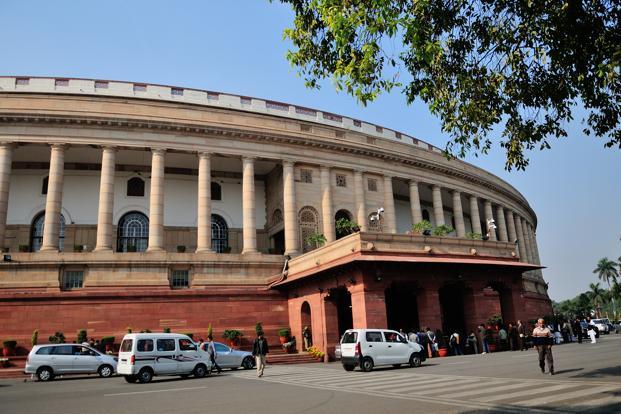Now Reading: Religion and State: Indian Perspective
-
01
Religion and State: Indian Perspective
Religion and State: Indian Perspective
India is a country of religious pluralism and cultural diversity. This largest democracy is combination of 28 full-fledged States and 8 Union Territories at present. The Hindu religion is predominant in many of these constituents. Its followers share almost 80% in a country population of 1028 million[2]. Then 138 million Muslims of India with a predominant sunni majority are the second largest community[3], then 24 million, the Christians with a predominant catholic majority are country’s third largest community[4], the Sikhs with a total population of 19 million next to them are Buddhists 8 million followed by 4 million Jains scattered all over the country[5]. Other than these 6 million, Zoroastrian, Jewish and Baha’i groups and number of tribal faiths prevailing over certain part of the country whose separate religious entity is recognized by state law[6].
Religion under Indian Constitution
India is a secular state as mentioned under Preamble[7] of the constitution. The term ‘secular’ was added by 42nd Constitutional Amendment Act of 1976. However, as the supreme court said in 1974, although the words ‘secular state[8]’ were not expressly mentioned in the constitution , there could be no doubt that constitution-makers wanted to establish such a state and accordingly Article 25-28 (guaranteeing the fundamental right to freedom) have been included in the constitution.
There is no substantive role of religion in the affairs of the State, but also there is no ban on allowing it a ceremonial role in State functions. There are various dimension of religion which can be stipulated from our Indian Constitution. The availability of freedom of religion is given to persons who include citizens as well as foreigners. Another dimension is types of State on the basis of religion, there are three types State,
1. Religious / Theocratic State – Such state endorses a particular religion or in other words there is a State sponsored religion and the state is pro-religion and devout state, for example- Saudi Arabia
2. Irreligious/ Agnostic State – Such state does not believe in God or religion. So it an anti- religion state. People of this state are atheist , for example – USA
3. Secular /tolerant State – Such state gives equal respect and recognition to all religions. Such state is neutral and people are tolerant , for example – India
There are two types of secularism,
1. Negative Secularism & Positive Secularism.
In negative secularism the state erects a wall of separation between itself and god. Such state disregards religion and all religious doctrines. For example- USA .And in positive secularism the state is only concerned with the relation of man to man and not relations of man to god, it is left to individual conscience. Such state shows reverence and respect towards every religion equally. For example- India. Our Indian constitution embodies the positive concept of secularism i.e., all religions in our country (irrespective of their strength) have the same status and support from the state[9].
In a leading case, the SC state that secularism is “more than a passive attitude of religious tolerance; it is a positive concept of equal treatment of all religions,” asserting at the same time that “when the State allows citizens to profess and practise religion it does not either explicitly or impliedly allow them to introduce religion into non-religious and secular activities of the State”[10]
It is mentioned under our Indian Constitution[11] that person has Freedom of Conscience it means inner freedom to mould ones relations with God, other human beings and living creatures. & Right To Freely –
-PROFESS RELIGION- It means to declare freely and openly one’s religion. No person can be ex-Communicated from a particular religion[12] but conversion to any religion should be for a bona fide purpose and should be motivated by genuine faith in the religion[13],
-PRACTISE RELIGION-It means to follow the religion and following customs, rituals and ceremonies associated with the religion. Muslims do not have a fundamental right to sacrifice animals on Bakrid[14]. Right to worship does not include right to worship at any particular place[15],
-PROPOGATE RELIGION-It means the right to disseminate and publicise the tenets and doctrines of one’s religion. Right to propagate religion does not include right to forcible conversion because this would impinge upon other person’s freedom of conscience[16].
But this is not an absolute right under article 25 this also comes with restrictions as
HEALTH PUBLIC-such as restriction on use of loudspeakers for Azaan,
ORDER- such as Relocation of mosque due to constant clashes in the area was held to be valid,
MORALITY – such as Jain monks can be prohibited from moving naked in public places, &
OTHER FUNDAMENTAL RIGHTS- such as restricting women’s entry in temples, mosques etc.
Emerging concept of secularism
EARLIER TREND
Religious Neutrality -This is said to convert into apathy and indifference – it reduces the role of state to a mere mechanical role.
PRESENT TREND
Religious Plurality- Now the shift is towards pluralism i.e. making one section of citizens professing a particular religion understand and respect the religious beliefs of other section of citizens.
CASE – ARUNA ROY V. UNION OF INDIA (NEW EDUCATION POLICY CASE)[17]
The new education policy which proposed the school curriculum to include lessons about major religions and their core beliefs was held to be in line with the concept of secularism – this would actually promote secularism and pluralism.
CASE – SANTOSH KUMAR V. SECRETARY, MINISTRY OF HRD[18]
Compulsory teaching of Sanskrit in schools was held to be constitutionally valid on the ground that Sanskrit is the mother of all Aryan languages.
Conclusion
India is a unique State, believing in secularism and yet preserving its spirituality through constitutional provisions, legislation, State policy and judicial pronouncements. Maintaining a rational balance between secularity and religiosity, accommodating religious sensitivities of the people to a reasonable extent, avoiding religion-based discrimination among the citizens as far as possible, and endeavoring to put them on a par regardless of religious affiliation, are the basic features of religion-state relations in India. God and Caesar both have a place under the constitutional and legal set up of the country, but the scope of “what belongs to God” remains wider in India than in most other professedly secular societies.
[1] B.A+LL.B(H.),School of Law , Galgotias University
[2] Source : Religion, Census of India 2001
[3] Among the minority Muslim groups are the Ithna Ashari Shi’as and the Isma’ilis
[4] The Census Reports mention Catholics and Protestants separately. Among the many other Christian groups are the Presbytarians, dominant in northeastern states
[5] Among the Buddhists the Mahamayana group is dominant, while the Jains are divided into Digambar and Swetambar sects
[6] SP Mittal v. UOI AIR 1983 SC 1.
[7] The Preamble now describes India as a “sovereign, democratic, socialist and secular republic” – the words “socialist and secular” added by the 1976 amendment.
[8] G S Pande, Constitutional law of India, Allahabad law agency, eighth edition,2002,P.222
[9] Then Union Law Minister, H R Gokhale defined this concept. Similarly, P B Gajendragadkar, a former CJI defined secularism as-‘the state doesn’t owe loyalty to any particular religion as such: it is not irreligious or anti religious: it gives freedom to all religion.
[10] SR Bommai v. UOI (1994) 3 SCC 1
[11] Article 25, Constitution of India
[12] PMA Metropolitan v. Moran MarMorthama (1995) AIR 2001
[13] Sarla Mudgal v. Union of India AIR (1995) SC 1531
[14] Hanif Qureshi v. State of Bihar (1958) AIR 731
[15] Ismail Farooqi v. Union of India (1994) 6 SCC 360 (Ayodhya Case)
[16] Rev. Stainslaus v. State of M.P( 1977 )SCR (2) 611
[18] (1994) 6 SCC 579









